MyPowerbank hacks London's Santander bikes so homeless people can charge their phones
Central Saint Martins graduate Luke Talbot has created a portable charger that can be hooked up to rental bikes to allow people experiencing homelessness to charge their phones for free.
On display as part of the Design Transforms exhibition at CSM during London Design Festival, MyPowerbank was designed to slot onto the chain of any Santander bicycle – rentable bikes provided by Transport for London – parked in one of the 800 docking stations across the capital.
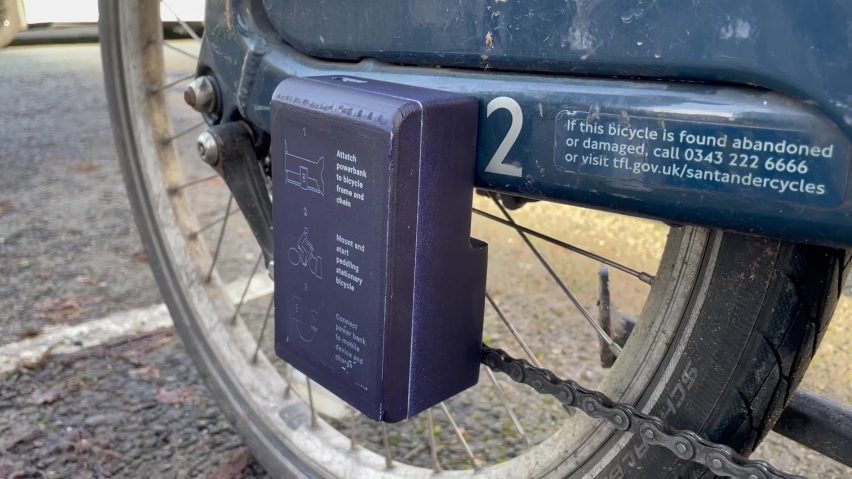
Talbot's product takes advantage of the fact that, without having to pay to take out one of these bikes, their chain will still move when pedalling backwards. This can power up the tiny pedal-powered generator contained in the portable charger.
The electricity generated in the process is then stored in MyPowerbank's internal batteries, with around 25 minutes of pedalling equating to one full phone charge.
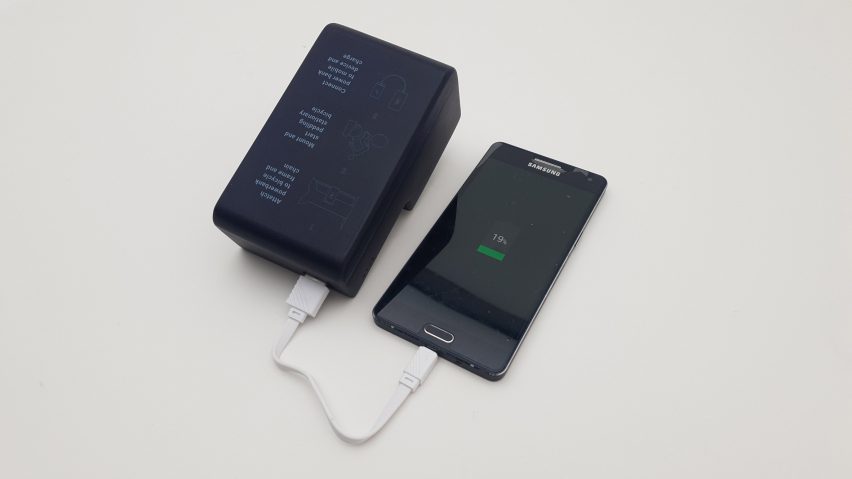
While most homeless people own a phone, Talbot conducted interviews with people sleeping rough across London and found that many struggle with finding a place where they can actually charge the device.
This can restrict their access to crucial digital services, from texting and banking to applying for benefit schemes.
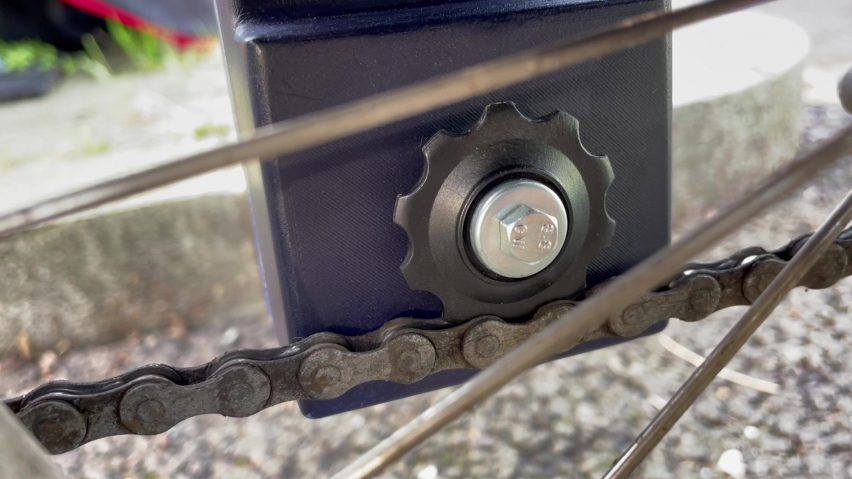
"When they started bedding down at night, becoming rough sleepers, a phone was their biggest priority because without that everything is so much harder," he told Dezeen.
"Every facet of our daily life revolves around the convenience of what a phone can do for us, from Google Maps to transferring money to messaging our friends, which keeps us sane," he continued. "They're just so life-or-death crucial."
The project was born out of Talbot's research into how urban infrastructure, often designed to make life hard for homeless people, could be hacked for their benefit.
In particular, his design was inspired by the blow-up homeless shelters of American artist Michael Rakowitz, which are inflated using buildings' hot air vents.
"I really fell in love with this idea of having this city that was designed against a certain group of people to segregate them socially, taking what the city gives away for free and using it against itself," he explained.

MyPowerbank works using an integrated dynamo like the kind commonly used to power bike lights, which turns kinetic energy from pedalling into electric energy.
A small gear at the back of the device is designed to slot onto the bike's chain, while an internal magnet clips onto the metal frame.
"The chain spins that gear, the gear spins the dynamo and the dynamo charges the two lithium-ion batteries inside," Talbot said. "The thing I like about it is that it's not new fancy tech, it's actually really old tech that's been reformatted for a new purpose."
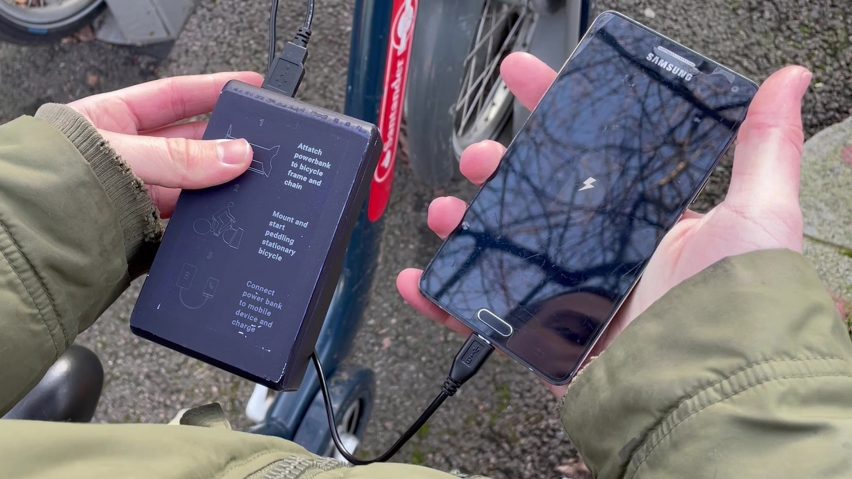
Talbot's working prototype features a 3D-printed shell, finished in the same navy blue as the Santander bikes' frames so as not to draw undue attention, while instructions are printed in UV ink so they are legible at night.
He built the dynamo from scratch using a Youtube tutorial and the two batteries, which each hold up to four full charges, are reclaimed from old powerbanks.
After being named one of the winners at this year's MullenLowe NOVA Awards, Talbot is now using his prize money to help make the design production-ready and cut down on the pedalling time needed per charge.
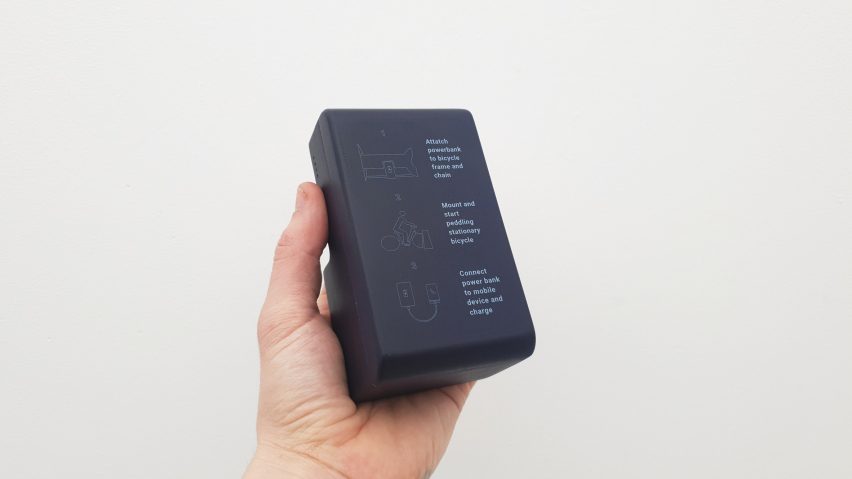
With components being sourced in bulk, he believes the powerbanks could be manufactured in collaboration with a charity or NGO for as little as £3 and distributed by homeless shelters to those who are most in need.
"Hopefully there'll be a circular repair system behind that so if it's broken, they could give it back to the shelter and the shelter would send it back to whoever ends up running it," Talbot said.
Other standout projects from this year's London Design Festival include a traditional West African bench reimagined as a giant game of Oware, a handbag made from bacterial leather and a furniture collection crafted from a single car.
Design Transforms was launched as part of London Design Festival and is on show at Central Saint Martins' Lethaby Gallery until 15 October. See our London Design Festival 2023 guide on Dezeen Events Guide for information about the many other exhibitions, installations and talks that took place throughout the week.